Driving is a trivial activity we perform every day without paying much attention. I am sure most of us who drive daily do not understand exactly how the car's engine or electronics work. An engine burns fuel to make the tires turn, which is common knowledge. However, very few know the intricate engineering of pushing the car forward when we hit the gas.
A vehicle's design ensures it is operable with as little knowledge as possible, making it accessible to billions today. A standardized design has furthered the convenience by ensuring that a Ford user can easily drive a Tata or a Tesla with minimal optimization, however different their internal engineering may be.
Today, we will explore two separate but complementary blockchain design innovations — Account Abstraction and Chain Abstraction, that may lead to a blockchain user experience (UX) comparable to the ease of driving a car. Such an innovation can potentially onboard billions of new users from all demographics and geographies regardless of their experience and skill.
Let us first dive into these concepts separately and then analyze them from a macro perspective.
Account Abstraction
Account abstraction is an idea almost as old as Ethereum itself. In the early days of Ethereum, there were two types of accounts on the Ethereum blockchain – Externally Owned Accounts (EOAs) and Contract Accounts.
The Ethos of Account Abstraction
EOAs are Ethereum accounts controlled by users where they store and transact ETH and other ERC-20 cryptocurrencies, whereas Contract Accounts are smart contracts that were programmed for specific functionality. Both EOAs and Contracts could store, transact, or receive tokens using their public address, but contracts could not initiate instructions on the Ethereum protocol. One needed an EOA to start a new transaction or an operation on a contract.
The Ethereum protocol enforced the EOA's privilege by mandating that every instruction on Ethereum, whether about EOAs or other contracts, must be signed with a public and private key pair. Only EOAs had an associated private key, whereas contracts had no owner and only a public key. EOAs worked with the help of a signer. The public key was cryptographically derived from the private key, and then the address was derived from the public key. Then, the private key can sign transactions for the assets stored under its control.
The key pair arrangement essentially meant that possessing the private key was synonymous with owning an account.
Signer (Private key, Public key) = Account Ownership
It also meant that a user needed to authorize every operation on its account with a signature, and the protocol could not batch transactions from the same or multiple accounts and process them in bulk.
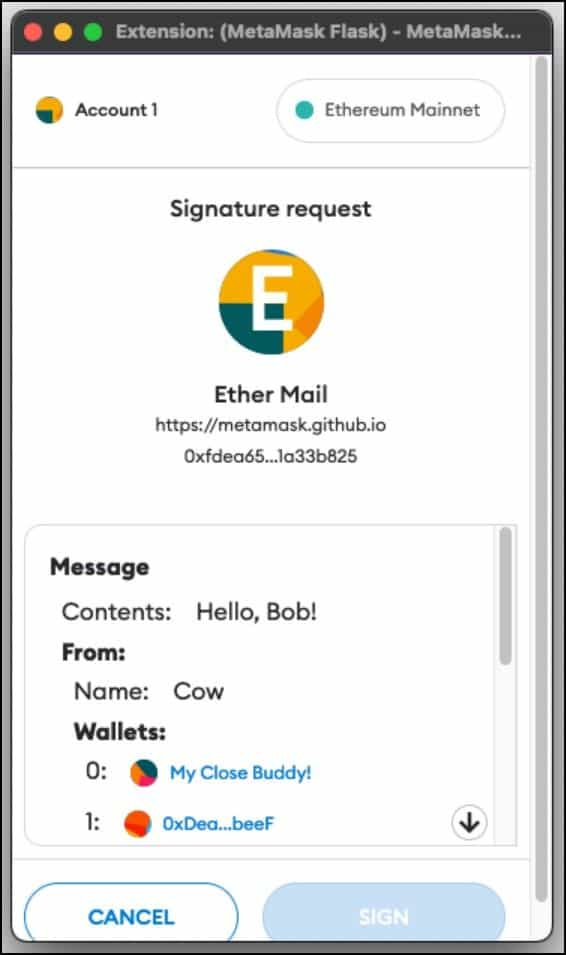
Wallet users like Metamask may already be familiar with this limitation. Manually signing every step of a transaction is not only cumbersome but also complicated for the uninitiated.
The ethos of account abstraction is decoupling this relationship. With account abstraction, we can replace public key private key cryptography with arbitrary logic, abstracting the definition of "owner" of an Ethereum wallet. If this ability seems trivial, let's explore the need for account abstraction.
Need for Account Abstraction
"But the reality is that the whole point of digital technology, blockchains included, is to make it easier for humans to engage in very complicated tasks without having to exert extreme mental effort or live in constant fear of making mistakes." – Vitalik Buterin.
In a personal blog post titled "The Three Transitions," Vitalik outlined three overreaching goals that will lead the Ethereum ecosystem toward its first billion daily active users worldwide.
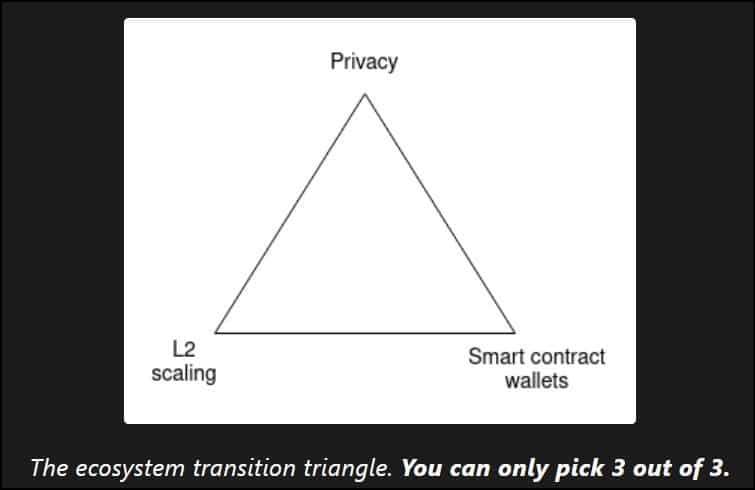
The three transitions are:
- The L2 scaling transition - everyone moving to rollups
- The wallet security transition - everyone moving to smart contract wallets
- The privacy transition - making sure privacy-preserving chain interactions are available.
Now, what are smart contract wallets? EIP-3074 introduced this concept by allowing users to delegate control over their accounts to a smart contract. Now, a private key could control an Ethereum account or have a smart contract with arbitrary verification logic take its place as the controller, abstracting the account ownership.
Now, how is the migration to smart contract wallets a security transition? Many believe that some significant barriers to global crypto adoption are:
- A complex UX: signing transactions at every step is cumbersome and time-consuming.
- A steep learning curve: One needs to learn about key management and the basics of blockchain technology to use it efficiently.
- Wallet sensitivity: Self-custody of private keys is impractical when Ethereum scales to billions. Social recovery alternatives are paramount.
Account abstraction is the potential ailment for all the above barriers. If necessary, it can simplify UX by authorizing transactions using multiple keys, a security key, digital identity, or even biometrics, reducing the learning curve.
Account abstraction improves security by allowing wallet owners to secure their funds however they feel comfortable. Some owners may also implement social recovery facilities. Social recovery is useful in case of theft or loss, after which the owners gather a bunch of whitelisted nominators who can together sign a transaction to transfer wallet ownership to a new contract.
To summarize, account abstraction simplifies blockchain UX, making it similar to the ease of driving a car and encouraging previously untapped user demographics (like senior citizens and institutions) to use Web3 for money management, paving the road to a billion users.
EIP – 4337, Account Abstraction Technical Overview
The Ethereum network recently underwent a profound protocol-level upgrade by migrating to Proof of Stake Consensus. The primary objective behind EIP-4337 is to achieve account abstraction while avoiding another protocol-level change. Here is a summary of the proposal goals:
- Achieve account abstraction:
- To entirely remove the necessity of EOAs by allowing the users to create new Ethereum accounts using smart contract wallets containing arbitrary verification logic.
- EIP 3074 introduced smart contract wallets, but users still needed an EOA to sign off on such a wallet creation for it to uphold the consensus rule. Account abstraction seeks to rebuke this status quo.
- Decentralization:
- Allow any validator to participate in the process of including account abstracted user operations.
- Enable account abstracted operations to work with any activity happening over the public mempool, allowing all types of operations to coexist.
- Do not require any Ethereum consensus changes:
- The proposal wants to avoid protocol-level changes, which require rigorous testing and community discussion, consuming more time and resources. Avoiding consensus changes will lead to faster adoption.
- Support other cases:
- Privacy-preserving applications.
- Atomic multi-chain operations.
- Pay for gas with ERC20 tokens.
Workflow:
- UserOperation - EIP 4337 avoids creating new transaction types for smart wallet operations. Users with smart wallets package the instructions they wish to perform on Ethereum in a new structure called UserOperation.
- Bundlers - The users send UserOperation objects to a separate mempool. A new entity called bundlers joins the Ethereum network. Bundlers possess the logic to identify and process UserOperation objects. They listen for those objects in the new mempool and bundle them into a single 'handleOps' object.
- Entry Point – Bundlers send the handleOps to a pre-published global entry point contract. The entry point contract conducts verification checks on each UserOperation and executes the instructions embedded in their calldata.

Role of Entry Point contracts:
The entry point contract's major role is to make account abstracted transactions compatible with the existing Ethereum validator network without requiring the validators to upgrade their code or significantly alter their current transaction processing logic. Here's how it achieves this:
- Interfacing with validators: As a bridge between the new account abstraction model and the existing Ethereum infrastructure, it processes UserOperations so that validators can include them in blocks alongside standard transactions.
- Standardizing transactions: The entry point contract standardizes account abstracted transaction specifics like verification and execution logic for UserOperations into a format supported by the existing Ethereum network.
- Minimizing validator changes: The validators continue to operate as they do with traditional transactions by simply including the entry point contract's executions in the Ethereum blockchain.
In essence, the EntryPoint contract in EIP-4337 is a strategic solution to introduce account abstraction into Ethereum. It allows for advanced transaction processing capabilities while ensuring that these transactions remain compatible with the existing validator network, thus facilitating innovation without necessitating a significant overhaul of the existing infrastructure.
Account Abstraction Use Cases
There are several use cases of account abstraction.
Gas Abstraction With Paymasters
Users need ETH to pay gas fees on the Ethereum network. With ERC-4337, the network can now accept payments in any ERC-20 token. Account abstraction enables this facility by introducing Paymasters, a new entity that can sponsor fee payments for operations submitted by the entry point contract. Gas abstraction is phenomenal for user experience:
- Users no longer have to necessarily maintain an ETH balance to pay for gas. A Paymaster may sponsor gas payments in exchange for ERC-20 tokens.
- When creating a new wallet, users don’t have to fill it up with ETH just to be able to use it.
Social recovery
Social recovery wallets are controlled by signing keys, similar to traditional EOAs. They also comprise a set of “guardian keys,” which can form a majority to change the signing key of the account. Users can make their friends, family, or trusted institutions the guardians to protect their wallets from theft and loss of keys.
Dead Man’s Switch
A dead man’s switch mechanism works similarly to a will, where a person’s demise leads to a transfer of property to the nominees. With account abstraction, users can program a transfer of ownership to another wallet to imitate a similar arrangement as wills.
Programmable Security
Smart wallets can also embed programs that require 2FA (two-factor authentication) for approving transactions as an additional layer of security. Furthermore, smart wallets can integrate with oracles to wallet 2FA with phones, emails, biometrics, or any other real-world identity verification system.
Custom Signature Schemes
Traditional Ethereum EOA uses a cryptographic scheme called ECDSA (Elliptic Curve Digital Signature Algorithm) to create transaction signatures. ERC-4337 can enable wallets to use other signature schemes as well. For instance, the ECDSA scheme is not quantum-resistant, which is a growing risk with advancements in quantum computing. Smart wallets can integrate quantum-resistant schemes as they enter the market with time.
Batch Transactions
Traditional EOAs can only execute one operation at a time, requiring signatures for every individual operation. Smart contract wallets can be programmed to execute multiple operations at the same time. For example, a wallet could be programmed to execute a trade on a decentralized exchange, update a lending position, and then transfer tokens to another account, all in one transaction.
The smart contract can then sequence these operations in batches and also ensure built-in atomicity. Earlier versions of atomic smart contracts were difficult to program without a standard smart contract logic to enforce atomicity.
Account Abstraction Summary
Account abstraction is live on the Ethereum mainnet for developers to create customized smart contract wallets. As Web3 expands, innovates, and engulfs more users and use cases, EIP-4337 brings the Web3 user experience much closer to TradFi, incentivizing the migration of users to the new paradigm.
The eventual goal of the Ethereum protocol is to integrate account abstraction at the protocol level with a hard fork and completely eradicate EOAs from the network. EIP-4337 is poised to smoothen this transition by providing developers enough time to make this transition smoothly and slowly.
Chain Abstraction
Chain abstraction refers to a concept that employs cross-chain tools and protocols to simplify and unify the interactions between different blockchain networks. Account abstraction builds on the idea that users perceive Ethereum wallets not as a mere pair of keys but as “accounts” in the general sense, so they must be able to secure those accounts however they want.
Chain abstraction builds on the idea that people use applications, not chains, so they must have the means not to be conscious about what network their application or account resides in. This concept is particularly relevant in the Web3 ecosystem, where multiple blockchains have unique features, protocols, and smart contract languages. Let's break down what chain abstraction involves:
- Interoperability: One of the critical goals of chain abstraction is to enable interoperability between blockchains by allowing applications to interact seamlessly with multiple blockchains without needing to implement specific protocols for each one.
- Simplified Development: For developers, chain abstraction means they can build applications without worrying about the underlying specifics of each blockchain. This simplifies the development process, as they can use a unified interface or set of tools to interact with various blockchains.
- Cross-Chain Communication: Chain abstraction facilitates cross-chain communication, allowing for data and value transfer between different blockchain networks. This capability is crucial for developing complex decentralized applications that leverage the strengths of multiple blockchains.
- Standardization: It often involves creating standards or protocols that abstract the differences between blockchains. Standardization can include standardizing how transactions are sent, smart contracts are executed, and data access.
- Enhanced User Experience: From a user perspective, chain abstraction can lead to a more cohesive and user-friendly experience. Users can interact with multiple blockchains through a single interface without needing to understand the technicalities of each blockchain.
- Layer 2 Solutions and Sidechains: Chain abstraction also plays a role in integrating layer 2 solutions and sidechains, which are designed to enhance the scalability and efficiency of blockchains. By abstracting these layers, users and developers can interact with them more easily.
Chain abstraction in blockchain is about creating a more unified and accessible environment where different blockchain networks can be interacted with in a more streamlined and standardized way. This unification is crucial for the broader adoption and usability of blockchain technologies and for realizing a truly interconnected and decentralized web, often called Web3.
Levels of Chain Abstraction
Blockchain networks and decentralized applications can achieve chain abstraction at different levels of the blockchain stack. Smart contracts can achieve chain abstraction at the execution level with minimal effort, whereas abstraction at the protocol level demands significant consensus and networking innovation. All designs have their advantages and limitations. They are summarized as follows:
Protocol-Level Abstraction
Protocol-level abstraction involves creating a common set of protocols or standards that can be implemented across different blockchains. It's more about the communication and interoperability standards between chains.
- Example: Polkadot's Relay Chain provides a shared security and interoperability framework for all its parachains. This is more of a protocol-level abstraction, as it standardizes how different parachains interact and achieve consensus and finality.
- Impact: Abstraction at this level enables the chains to operate under shared security, leading to defragmented liquidity across the connected networks. Such networks establish in-built cross-chain atomicity via the settlement layer, making DApps more capable than execution-grade abstraction. However, protocol-grade abstraction limits smart contract flexibility, and adding new chains takes time to pass through governance and consensus processes.
Execution-Level Abstraction
This refers to the abstraction of the execution environment for smart contracts, enabling them to operate or trigger actions across multiple blockchain networks.
- Examples: Cross-chain smart contract protocols like Chainlink, LayerZero, and Connext. These platforms allow for the creation and execution of smart contracts that can interact with multiple blockchains, abstracting away the complexities of each blockchain's execution environment.
- Impact: This level of abstraction is crucial for developing decentralized applications that need to interact with different blockchain networks seamlessly. It simplifies the process of creating smart contracts that can, for example, gather data from one chain, execute logic on another, and settle transactions on a third. However, the individual chains are still responsible for their security, and it is difficult to achieve cross-chain atomicity at the execution level.
Application-Level Abstraction
At this level, the abstraction is focused on the application layer or the development of decentralized applications, providing developers with tools and frameworks to build applications that can interact with multiple blockchains seamlessly.
- Example: SDKs (Software Development Kits) and APIs that allow developers to build decentralized applications without interacting directly with the underlying blockchain protocols. Tools like Ethers.js Libraries and Truffle suite for DApp and smart contract development.
- Impact: It greatly reduces the complexity of developing multi-chain applications and enhances the focus on application logic rather than blockchain specifics. This level of abstraction is crucial for simplifying the development process and making blockchain technology more accessible. Some demerits include a lack of flexibility, customization, and reliance on third-party tools.
Protocol-level Chain Abstraction Projects in Web3
Polkadot, Cosmos, and Avalanche are three prominent blockchain platforms that significantly contribute to chain abstraction by enhancing interoperability and simplifying interactions across multiple blockchain networks. Each platform has its unique approach, but they all aim to create a more interconnected and user-friendly blockchain ecosystem.
Polkadot
Polkadot, developed by Web3 Foundation, introduces a novel relay chain and parachains concept. The relay chain is the central chain of Polkadot, providing security and interoperability for all connected parachains — independent blockchains with specific features and use cases. This architecture facilitates chain abstraction by allowing these diverse parachains to seamlessly communicate and transfer data and value.
Polkadot's shared security model ensures that parachains benefit from the collective security of the network, abstracting the need for each chain to establish its own security mechanisms. Polkadot's Substrate framework also enables developers to build custom blockchains (parachains) that can plug into the Polkadot network easily, significantly simplifying blockchain development and deployment.
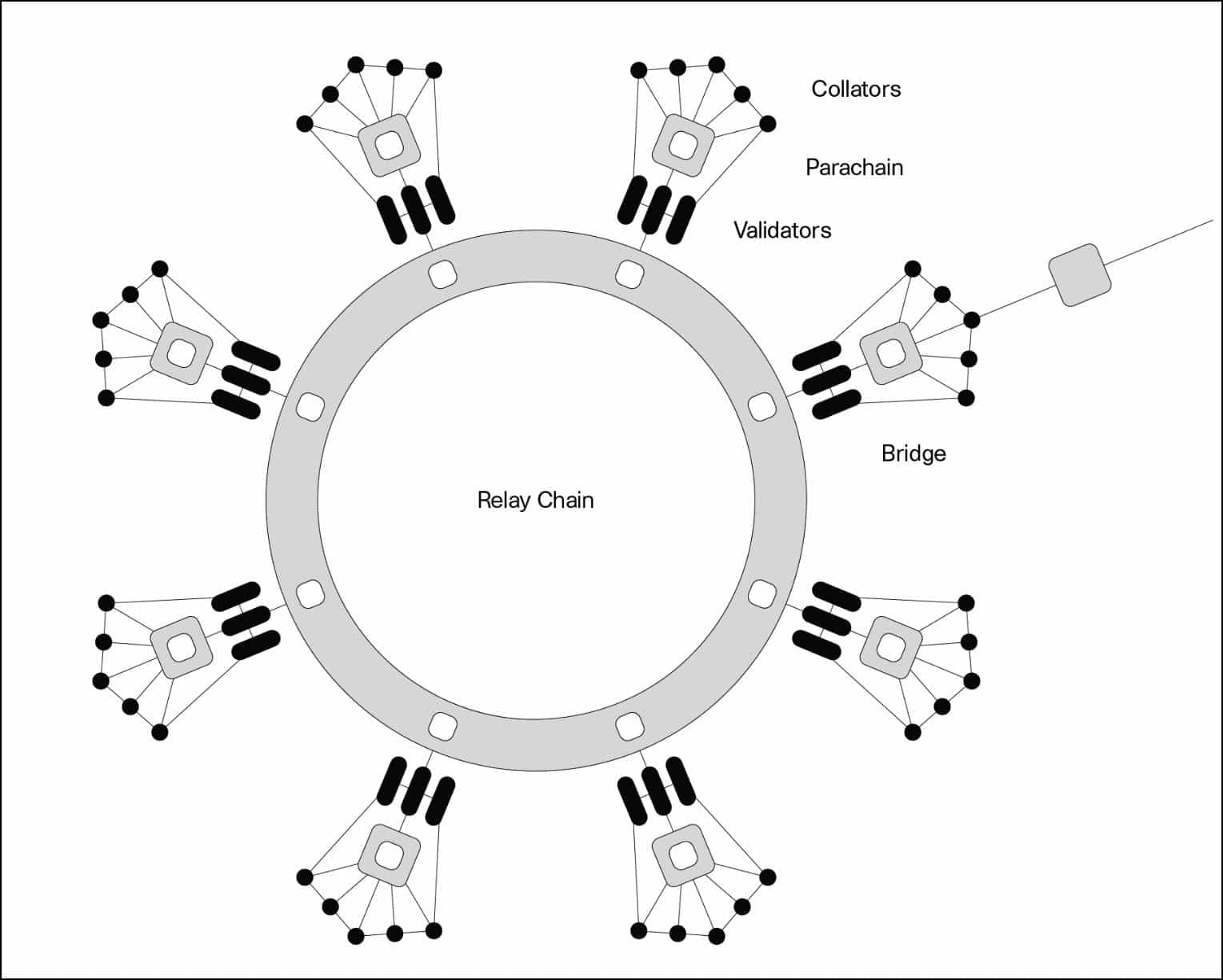
Cosmos
Cosmos takes a different approach with its Inter-Blockchain Communication (IBC) protocol, which is designed to enable communication between independent blockchains. This communication is achieved through a model of hubs and zones, where hubs are central blockchains that connect various zones (independent blockchains).
Cosmos' focus on modularity and interoperability allows for a high degree of customization while maintaining the ability for different blockchains to interact. This modular architecture, combined with the IBC protocol, abstracts the complexities of cross-chain communication, making it easier for blockchains within the Cosmos ecosystem to transfer data and tokens securely and efficiently.
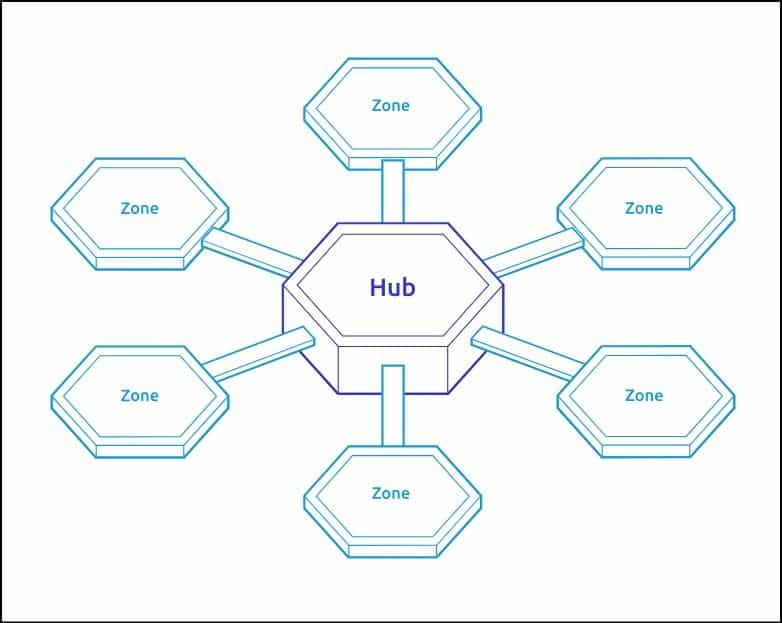
Avalanche
Avalanche offers a unique consensus mechanism and a platform for creating custom blockchains and decentralized applications. It consists of multiple subnets, each operating its own blockchain. These subnets can have different rules and use cases but are all secured by the primary Avalanche network. This structure allows for a high degree of customization and scalability. While Avalanche's primary focus is on scalability and transaction speed, its subnet architecture also contributes to chain abstraction by allowing for the creation of diverse blockchains that can interact within the Avalanche ecosystem.
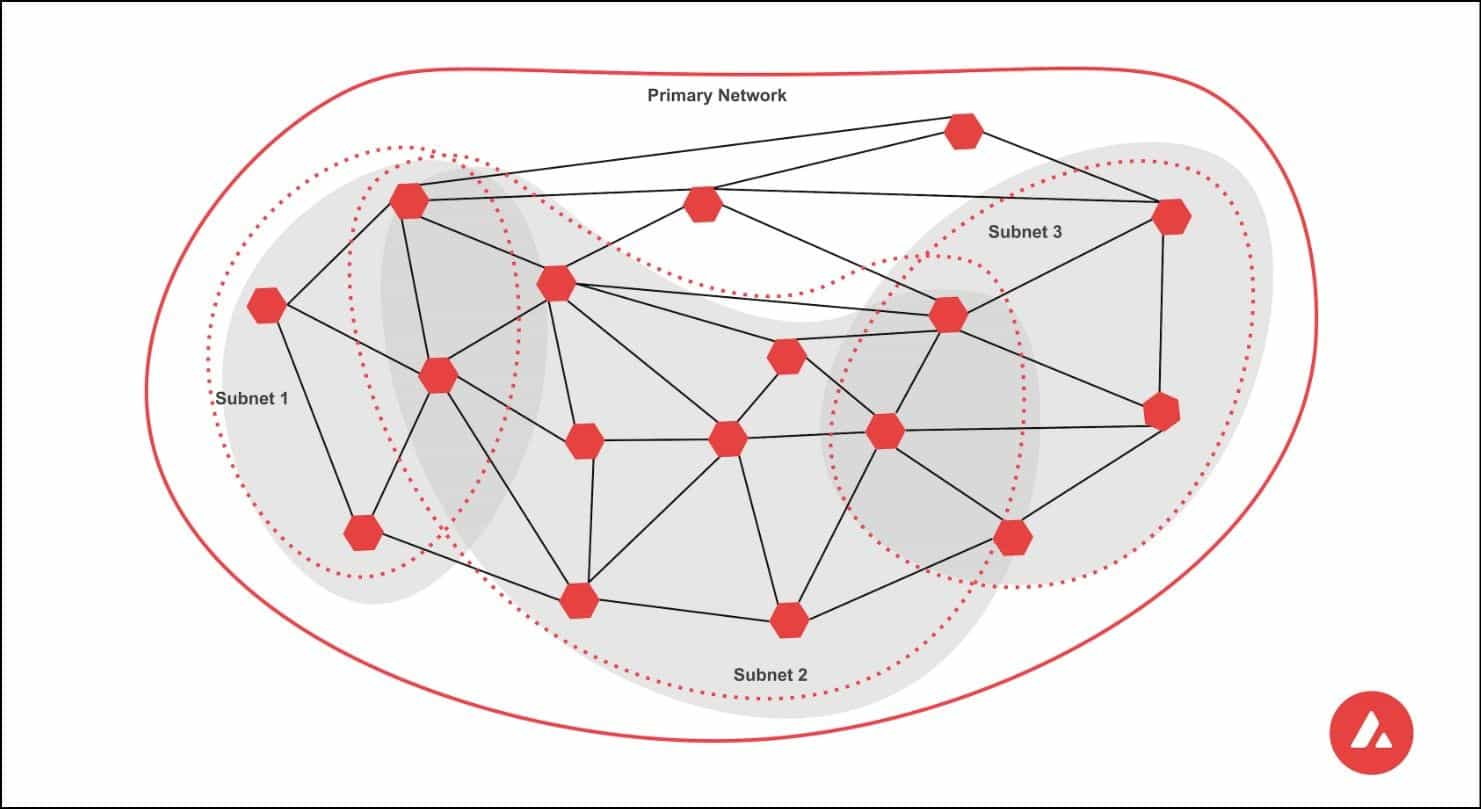
In summary, Polkadot, Cosmos, and Avalanche each provide frameworks and protocols that facilitate chain abstraction through enhanced interoperability, security, and ease of development. However, protocol-grade chain abstraction was achievable when these ecosystems initially implemented the necessary design principles while building the protocol. Protocol-grade abstraction is impossible in existing legacy ecosystems like Ethereum unless the community redesings the protocol from the ground up and implements a hard fork, which is why abstraction in the Ethereum ecosystem is an execution-level effort.
Execution-level Chain Abstraction in Web3
Interoperability and composability projects like LayerZero, Chainlink, Connext and dappOS implement execution-level chain abstraction. They use smart contracts to relay value and information across connected blockchain ecosystems. As they operate at the execution level, they are not limited to a single execution environment like EVM, and can connect to non-EVM chains as well.
LayerZero Omnichain Fungible Token (OFT)
LayerZero is an interoperability protocol that provides a foundation for cross-chain communication, enabling DApps to interact across different blockchain networks. Its unique approach involves using a combination of oracles and relayers to facilitate message passing between chains. This method addresses liquidity fragmentation by allowing assets and information to flow more freely across chains, enhancing the liquidity pool available for decentralized finance (DeFi) applications.

LayerZero's Omnichain Fungible Tokens (OFT) standard is a pivotal development in this space. OFT allows for the creation of tokens that exist on multiple chains simultaneously, significantly improving user experience by enabling users to interact with a single asset across various ecosystems without the need for complex bridging mechanisms. This approach also enhances smart contract composability, as contracts on different chains can interact more seamlessly with these omnichain assets.
By enabling more fluid cross-chain interactions, LayerZero and OFT are paving the way for truly cross-chain DApps, where applications are not confined to a single blockchain but can leverage the strengths of multiple ecosystems.
Chainlink CCIP
Chainlink, known for its decentralized oracle network, has introduced the Cross-Chain Interoperability Protocol (CCIP). CCIP aims to enable secure and trustless communication between different blockchain networks. This protocol addresses the challenge of liquidity fragmentation by allowing different blockchains to share information and value, thereby pooling liquidity resources across multiple ecosystems.
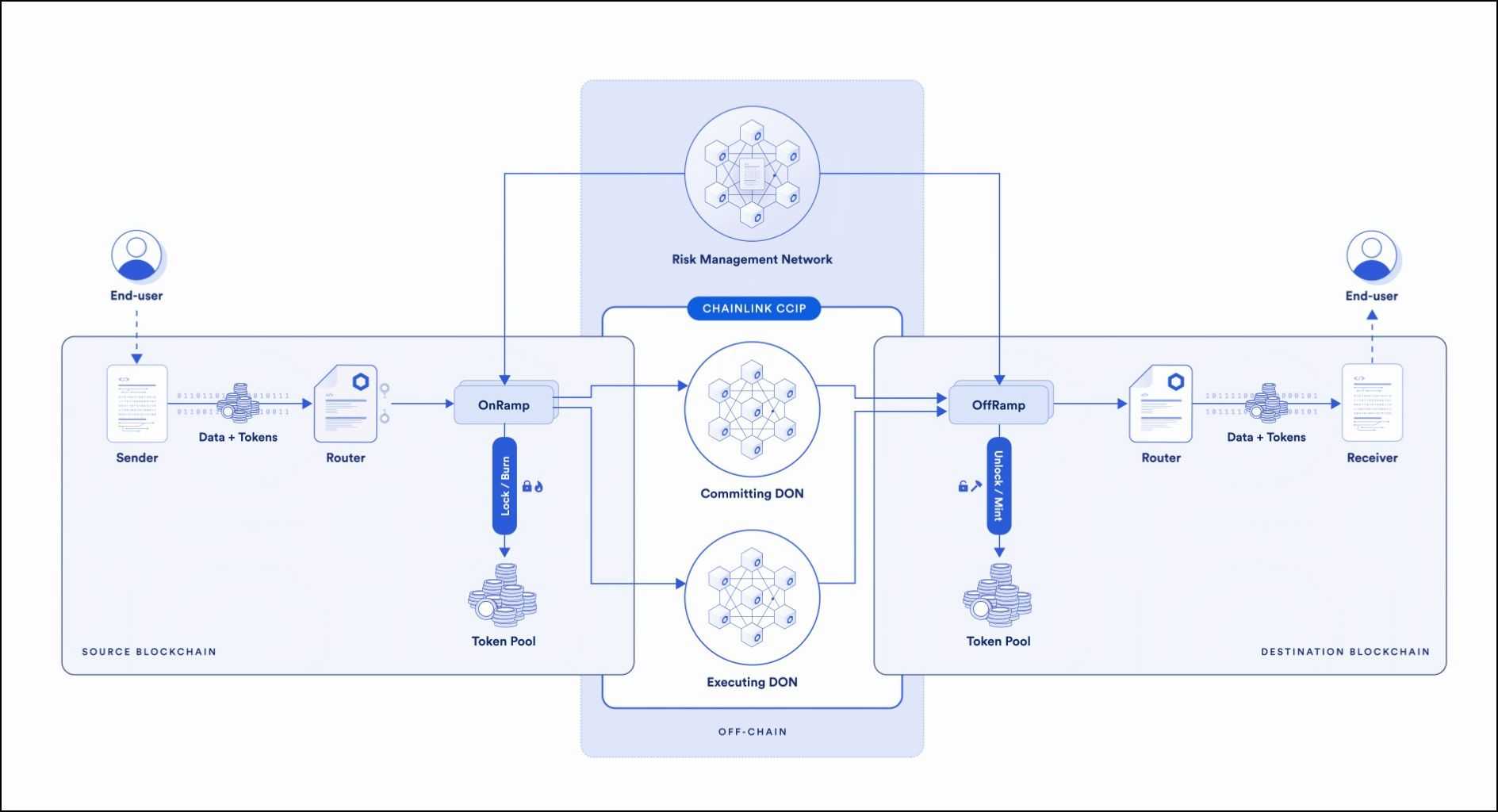
CCIP enhances the user experience by providing a more seamless and integrated approach to cross-chain interactions. Users can benefit from the diverse functionalities of different blockchains without facing the usual complexities of cross-chain operations. For developers, CCIP offers a way to build cross-chain DApps with enhanced composability, as smart contracts on different chains can interact more effectively through Chainlink's secure and reliable data transmission.
Chainlink's CCIP is a significant step towards a more interconnected blockchain environment, where the barriers between different networks are minimized, fostering the development of advanced cross-chain applications.
Connext
Connext's chain abstraction, particularly through its xCall and xERC20 features, significantly simplifies cross-chain interactions. xCall is a function that enables DApps to seamlessly call contracts and send messages across different blockchain networks. This function abstracts the complexities of cross-chain communication, allowing DApps to interact with users and contracts on any chain as if they were on the same network.
Meanwhile, xERC20 is a standard for creating cross-chain fungible tokens. It allows tokens to exist and be utilized across multiple chains. It addresses the issue of liquidity fragmentation by unifying the fragmented liquidity across different wrapped assets arriving from other chains and bridge protocols that have the same underlying. Together, xCall and xERC20 facilitate a more unified and fluid experience in the multi-chain ecosystem, enabling assets and data to move across chains without the typical barriers, thus enhancing the interoperability and composability of DApps.
dappOS
dappOS is designed as an operating protocol that significantly lowers the barriers to interacting with various crypto infrastructures, thereby addressing chain abstraction. It achieves this by building an infrastructure that enables a Web2-like user experience in the blockchain domain. Key components of dappOS include:
- dApp SDK: This is a solution that simplifies the process for users of one blockchain (chain A) to use DApps on another blockchain (chain B). By abstracting the complexities of cross-chain interactions, the DApp SDK makes it much easier for users to engage with DApps across different blockchain networks.
- Mini-program Platform: dappOS also offers a mobile app platform that provides a user experience similar to traditional Web2 applications. This platform is designed to make the use of DApps more intuitive and accessible, particularly for users who are not familiar with the intricacies of blockchain technology.
Overall, dappOS focuses on enhancing the user experience and simplifying the development process in the blockchain space. Its approach to chain abstraction is centered around making blockchain interactions as seamless and straightforward as possible, akin to the ease of use found in Web2 environments.
Application-level Chain Abstraction in Web3
Application-level chain abstraction has enabled the development of various DApps that provide seamless user experiences and functionalities across multiple blockchain networks. Here are a few notable examples:
Aave
Aave is a leading decentralized lending and borrowing platform. It utilizes application-level abstraction to interact with different blockchain protocols, allowing users to lend, borrow, and earn interest on a wide range of cryptocurrencies.
- Abstraction Implementation: Aave leverages smart contract frameworks and high-level APIs to abstract the complexities of blockchain interactions. This enables users to engage in lending and borrowing activities across different blockchains without needing to understand the underlying blockchain mechanics. Aave's integration with various blockchain networks addresses liquidity fragmentation by pooling assets from multiple ecosystems, enhancing the platform's liquidity and utility.
- Impact: Aave's use of application-level abstraction has significantly contributed to its user-friendly interface and robust platform capabilities, making it a cornerstone in the DeFi space.
OpenSea
OpenSea is one of the largest and most popular marketplaces for non-fungible tokens (NFTs). It allows users to buy, sell, and discover exclusive digital assets like art, collectibles, and more.
- Abstraction Implementation: OpenSea employs application-level abstraction to simplify the process of buying, selling, and auctioning NFTs. By integrating with multiple blockchain networks, OpenSea enables users to interact with a diverse range of NFTs without the need for deep blockchain knowledge.
- Impact: The platform's abstraction layer enhances user experience by providing a streamlined and intuitive interface. This approach has been instrumental in attracting a broader audience to the NFT space, contributing to the mainstream adoption of NFTs.
A Fragmented Web3
The Web3 ecosystem, while burgeoning, is currently fragmented in several key areas, leading to a complex and often challenging user experience. This fragmentation is evident in aspects like liquidity, security, applications, governance, and interoperability.
- Liquidity Fragmentation: The liquidity in Web3 is spread across multiple blockchains and decentralized exchanges (DEXs). This dispersion creates inefficiencies, as assets are not easily transferable across ecosystems, leading to isolated liquidity pools and often higher slippage in trading.
- Security Concerns: Different blockchains have varying security protocols and consensus mechanisms, leading to inconsistent security standards. This poses a risk, especially in cross-chain interactions, where the security of one chain can significantly impact another.
- Application Fragmentation: The Web3 space is filled with a plethora of DApps, each operating on different blockchains with their own standards and interfaces. This diversity, while innovative, creates a steep learning curve for users who need to navigate different platforms with unique operational mechanisms.
- Governance and Standards: The lack of unified governance and standards across blockchains leads to a disjointed ecosystem. This affects everything from token standards to smart contract interactions, complicating the development and use of DApps.
- Interoperability Issues: The ability of different blockchain networks to communicate and interact with each other is limited. This lack of interoperability hinders the seamless transfer of data and value across chains, crucial for a cohesive Web3 experience.
Addressing Fragmentation Through Chain and Account Abstraction
Chain and account abstraction are two approaches that aim to mitigate these fragmentation issues in Web3.
Chain Abstraction
- Unified Interfaces and Protocols: Chain abstraction involves creating standardized interfaces and protocols that allow for seamless interactions across different blockchains. This can significantly reduce liquidity fragmentation by enabling assets to move more freely across chains, pooling liquidity resources.
- Cross-Chain Communication: By facilitating efficient cross-chain communication, chain abstraction addresses interoperability issues. This enhances the user experience by allowing for more integrated and complex applications that leverage the strengths of multiple blockchains.
- Simplified Development Process: For developers, chain abstraction means they can build applications without worrying about the specifics of each blockchain, leading to more cohesive and user-friendly applications.
Account Abstraction
- Enhanced User Experience: Account abstraction simplifies the user experience by providing a more intuitive way to interact with blockchain networks. It can abstract away complex processes like transaction signing and wallet management, making it easier for non-technical users to engage with DApps.
- Improved Security: By standardizing how users interact with different blockchains, account abstraction can also lead to improved security practices, as users are less likely to make errors in transactions or wallet management.
- Cross-Chain Identities: Account abstraction can facilitate the creation of cross-chain identities, allowing users to have a single identity across multiple blockchains. This not only simplifies the user experience but also opens up possibilities for more integrated governance and voting mechanisms across the Web3 ecosystem.
The fragmentation in Web3, spanning liquidity, security, applications, and interoperability, creates a complex landscape that can be daunting for users and developers alike. Chain abstraction and account abstraction are crucial in addressing these challenges, offering solutions that streamline interactions, enhance security, and improve the overall user experience. By implementing these abstractions, the Web3 ecosystem can move towards a more integrated, efficient, and user-friendly future.
Conclusion — The Future of Web3
The future potential of Ethereum and Web3, propelled by account and chain abstraction, is poised to significantly bridge the gap between the current blockchain experience and the ease, speed, and efficiency characteristic of Web2. Account abstraction simplifies user interactions with Ethereum, making wallet management and transaction processes more intuitive, akin to traditional online experiences. Chain abstraction enhances interoperability across diverse blockchain networks, enabling seamless asset and data transfer akin to the fluidity of information exchange on the Internet.
Collectively, these innovations promise a more user-friendly and efficient blockchain ecosystem. They are key to unlocking the full potential of decentralized applications, making them accessible to a broader audience, and fostering widespread adoption. The integration of these abstractions heralds a future where blockchain's robust, trustless nature is coupled with the user-centric design of Web2, creating a more inclusive and powerful digital landscape.
Frequently Asked Questions
Account abstraction in Ethereum and other blockchains refers to simplifying user accounts so they function more like smart contracts. This approach streamlines interactions, making them more user-friendly. It abstracts complex processes like transaction signing and wallet management, allowing users to interact with blockchain networks more intuitively, similar to traditional web applications.
Chain abstraction is the process of creating a unified execution or protocol layer that allows for seamless interactions across different blockchain networks. It involves standardizing interfaces and communication protocols, enabling applications to interact with multiple blockchains without dealing with each one's unique complexities. This facilitates interoperability, asset transfer, and data sharing across diverse blockchain ecosystems.
Abstraction is crucial for Web3 as it simplifies the complexities of blockchain technology, making it more accessible and user-friendly. By abstracting intricate details of blockchain interactions and cross-chain communications, it lowers the barrier to entry for both users and developers, fostering broader adoption and innovation in the decentralized web.
Abstraction will attract more users to Web3 by significantly enhancing the user experience, making it more comparable to the familiar and intuitive interfaces of Web2. Simplifying wallet interactions, transaction processes, and cross-chain activities, abstraction makes navigating the blockchain space less daunting for non-technical users, encouraging wider participation and adoption.
Polkadot and Cosmos are notable examples of chain abstraction, offering frameworks that enable interoperability and seamless communication between different blockchain networks. LayerZero and Connext also provide solutions for cross-chain communication, abstracting the complexities of interacting with multiple blockchains. Account abstraction is a protocol phenomenon. Every project is compatible with account-abstracted wallets without any upgrades.
Disclaimer: These are the writer’s opinions and should not be considered investment advice. Readers should do their own research.


